Certifications To Look For in Tower Builders
There are several things to consider when you’re constructing communication towers—for example, the location. Regardless of where you’re installing your towers, you need to make sure your builders carry the proper certifications.
Communication towers are essential in providing regions with modern connectivity. They serve as the basis for mobile networks, internet access, and wireless communication. However, the construction, installation, and maintenance of these structures require expert knowledge, skills, and credentials.
Here are a few key certifications to look for in tower builders. Finding workers with these certifications puts your project in good hands and can safeguard you from potential legal issues, fines, or other risks. These certifications demonstrate expertise and provide reassurance for the cities or businesses undertaking these projects.
1. Tower Climber Certification
One of the first things to look for is a tower climber certification. This credential shows that the builder has received the proper training to climb and work safely at great heights.
Because communication towers can be hundreds of feet tall, workers must be able to precisely maneuver in these environments. Builders undergo training to understand fall protection systems, proper climbing techniques, and equipment usage. Many companies offer these certification courses, so make sure their certification is from a reputable source. This certification guarantees that tower builders can handle the unique physical demands of the job while minimizing potential risks.
2. OSHA Certification
When you’re looking for safe working conditions, ensure the company has the required Occupational Safety and Health Administration (OSHA) certifications. All workers need OSHA certification when working at or around construction sites. This organization focuses on promoting safe and healthy working conditions for all employees.
OSHA tower builder certifications involve training in risk management, fall prevention, and hazard identification. Workers with OSHA certifications know how to prioritize safety protocols and can make sure that the work environment adheres to strict safety guidelines while reducing liability risks.
3. First Aid and CPR Training
Accidents can happen on any jobsite, but there are extra risks on construction sites, particularly those involving high-altitude projects like communication towers. It’s a good idea for builders to have training in first aid procedures and CPR to deliver an extra layer of preparation when performing tasks.
Should an accident occur, individuals with these certifications can offer immediate medical aid, stabilizing injured workers before emergency responders arrive. Projects like this should emphasize safety above all else, and this certification highlights a builder’s commitment to protecting involved personnel.
4. Rigging Certification
Rigging is an important aspect of working on communication towers. Rigging equipment involves using pulleys and cranes to install or maintain heavy components. Rigging certification showcases that builders understand how to use this equipment and navigate issues like load calculations, equipment limitations, and other factors.
Missteps in rigging can result in severe structural damage or injuries. Riggers with credentials offer technical skills and problem-solving experience that can reduce the likelihood of these risks during construction, installation, or maintenance.
5. Competent Person Training
Another useful training course is OSHA’s competent person training. This is an extra training program that indicates a person understands the environmental risks of a jobsite. While tower climber certifications focus on labor, a competent person ensures that everyone on-site follows safety measures according to industry standards and local environmental regulations. Certified individuals can audit work conditions actively, spot potential hazards, and implement corrective measures on-site. Completion of this course ensures that a tower project benefits from consistent, high-level safety enforcement.
6. RF Awareness Certification
Another certification to look for in tower builders is radiofrequency (RF) certification. RF energy is a key component of communication towers, but there are potential hazards that come from overexposure to RF energy. Tower builders need RF awareness certification to recognize and mitigate the risks associated with RF exposure.
This certification includes training on monitoring RF energy and applying site-specific protocols to avoid dangerous exposure levels. Tower builders with RF awareness training demonstrate a commitment to personal safety while maintaining an understanding of the rules and regulations that come with federal standards.
7. NWSA TTT Certification
The National Wireless Safety Alliance (NWSA) offers the Telecommunications Tower Technician (TTT) Certification for workers who wish to specialize in telecommunications towers. Many branches of the telecommunications industry recognize this certification as a benchmark that displays technical skills, safety knowledge, and general task competence for tower builders.
The TTT certification emphasizes proficiency in equipment handling, structural maintenance, and safety protocols. A builder holding an NWSA certification often represents an essential asset to any communication tower project.
8. Crane Operator Certification
Many tower installation or construction jobs require using cranes to lift or position heavy materials like metal lattice sections or antennas. Builders with crane operator certification have the specialized training necessary to operate cranes safely and skillfully on-site.
These certifications also indicate that operators understand load weight distribution and structural limitations, reducing risks during high-intensity construction phases.
9. Structural Welding Certification
Welding is an important skill that often plays into the assembly and maintenance of communication towers, especially those that utilize steel. A structural welding certification confirms competency in structural metalwork and allows the builder to make safe, reliable welding adjustments during construction that meet current strength and durability standards.
Certified welders understand both technique and how to ensure the stability of the overall structure. Hiring builders with structural welding expertise means stronger towers capable of enduring extreme weather and long-term use.
10. Fall Protection Awareness Certification
Slips and falls are among the biggest risks that come from working on communication tower projects. Fall protection awareness certification ensures that builders possess a full understanding of the tools, equipment, and systems designed to prevent falls.
Not only does this certification showcase a fundamental understanding of safety behavior and regulations, but it also adds a layer of trust and reliability for the region or business constructing it. Hiring builders with these qualifications greatly increases safety margins.
Building Confidence With Certified Tower Builders
The construction of communication towers is a complex undertaking, requiring skilled professionals with the appropriate certifications. From technical expertise to safety and compliance, each certification highlighted above plays a vital role in ensuring the project meets industry standards.
Whether you’re looking to enhance urban connectivity or expand infrastructure into rural regions, partnering with certified tower builders sets the foundation for success. By verifying certifications, cities and businesses can confidently pursue their goals while minimizing risks and inefficiencies.
Looking for experienced telecom tower contractors to support your next project? Allstate Tower, a proud part of the Pittsburg Tank & Tower Group, is your trusted partner for top-quality solutions. With a commitment to safety, consistency, and excellence, our certified team delivers industry-leading results every step of the way. Contact us today to learn how we can help bring your vision to life.
Copyright © 2024 Pittsburg Tank & Tower Group. All Rights Reserved
















